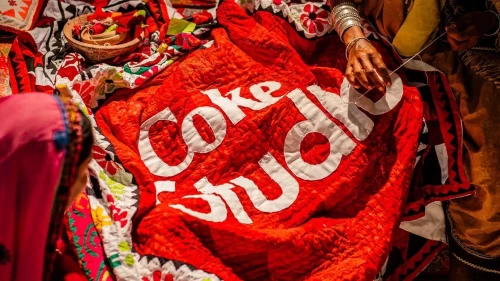IT comes as a surprise when the US dollar falls sharply in the open market at a time when the external sector is under pressure; and on May 5, financial markets expressed a similar sentiment when the dollar plunged to Rs117.30 in the open market after scaling a new height of Rs119.50 on April 25.
So, what really caused the greenback to lose 1.8 per cent value in the span of a few days? And why, in the first place, had it shot up to Rs119.50 on April 25, against its interbank closing rate of Rs115.62 the same day?
“The April 25 rise of the dollar in the open market was clearly a work of speculation,” says a senior central banker. “Our officers who keep an eye on daily movement of the open market got in touch with foreign exchange companies and warned them to curb that speculation-driven rupee rout.
“Then we summoned the representatives of the Exchange Companies Association of Pakistan the very next day and warned them to behave or be ready to face the music. They started behaving and the rupee made a quick recovery.”
What really caused the greenback to lose value in the span of a few days? And why had it shot up to Rs119.50, against its interbank closing rate of Rs115.62 the same day?
Forex dealers and bank treasurers insist, however, that between April 26 and May 5 the central bank also arranged foreign exchange through banks for forex companies.
“That is normal. When exchange companies are in trouble they buy dollars at low rates from some banks and the banks, in turn, get those dollars from the central bank mostly through dollar-rupee swap deals,” says a treasurer of one of the top five banks. “It always works.”
Bankers, however, say that it was not speculations alone that had pushed the dollar past Rs119.50.
The release of external sector data that showed that the current account deficit had expanded to $12 billion in nine months of this fiscal year (against about $8bn in a year-ago period), and difficulties in the interbank market in meeting end-of-month foreign obligations, also provided the basis for a weaker rupee projection, they say.
Owners and executives of exchange companies, particularly those considered close to the central bank, cite a number of reasons to remain unalarmed about the recent exchange rate stability in the open market.
“Rising inflows of remittances during Ramazan, growth in exports, better prospects of foreign direct investment, end-April inflow of $1bn Chinese loan and possibility of further foreign loans coming in from the Islamic Development Bank, Asian Development Bank and the World Bank are the factors that keep the rupee stable,” says Malik Bostan, head of Forex Association of Pakistan.
He and several others in exchange companies also point out that the reason for the relative calm in the open market and the resultant rupee stability is the tighter monitoring of forex flows in and out of Dubai, enforced recently by the UAE Central Bank, and ongoing vigilance of the State Bank of Pakistan (SBP) and Federal Investigation Agency (FIA) which has helped curb forex smuggling.
After making a sharp recovery against the dollar on May 5, the rupee has been trading in the band of Rs117.20-Rs117.70 in the open market for buying and selling.
Some forex company executives are confident that if no unforeseen event occurs the rupee should not fall below Rs118 per dollar by the end of June.
They say that when on April 25 the rupee had nosedived to 119.50 a dollar, there were rumours in the market about further rupee depreciation. But in a subsequent meeting at SBP, central bankers dispelled this impression and “they told us no such thing is going to happen,” one of them recalls.
An amendment made in the Finance Bill of 2018 has restricted foreign currency accounts by Pakistanis that do not file tax returns.
Although it is a good move to curb money laundering it will likely slowdown growth of forex deposits in the short term. And that, in turn, may affect forex liquidity in the interbank market making it all the more difficult for the central bank to intervene freely to support the local currency, bankers say.
So, keeping forex liquidity in the open market has become very significant and that cannot be achieved without supporting those disciplined exchange companies that buy non-dollar foreign currencies and sell them in Dubai to bring back their dollar equivalent.
“That’s why we anticipate that the central bank won’t let good exchange companies go dry when buying pressure increases their demand for dollars,” says the managing director of an exchange company.
“Through export of non-dollar currencies to Dubai we used to bring back home no less than $300 million a month till 2015 but that amount has decreased by half. If the central bank wants us to bring more dollars, it should act against those imprudent exchange companies that are still involved in short-reporting of foreign exchange.”
The owners of two leading local exchange companies say that on their request the SBP and FIA have recently launched a joint campaign to identify those involved in physical currency smuggling, a leading cause of the periodic speculative attack on the rupee.
Regardless of the relative calm that currently prevails in the open currency market, one cannot be sure how long the rupee will fare well as fundamentals of the external account remain distressed.
“I think the rupee will remain under pressure in the interbank market this month and also in June. I don’t know how our open market exchange rates will remain stable in this scenario” says the treasurer of a local bank.
Published in Dawn, The Business and Finance Weekly, May 21st, 2018













































